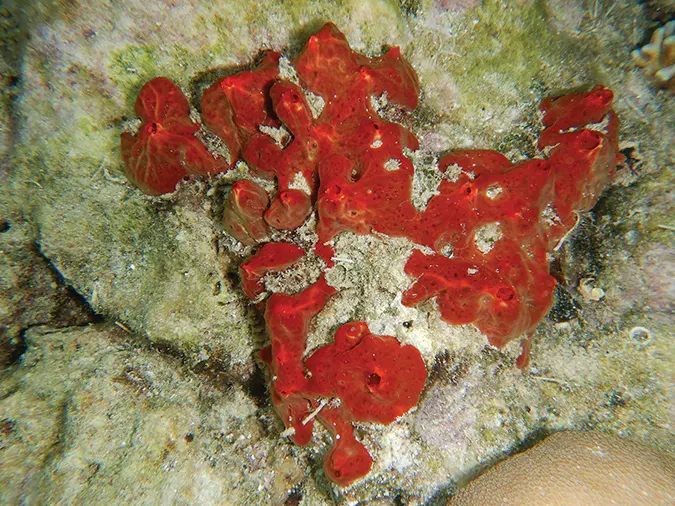NEWS - Researchers from Hasanuddin University in Makassar, Naturalis Biodiversity Center in Leiden and Leiden University discovered a diverse range of marine sponges in the Spermonde Archipelago or Sangkarang Islands, including new records and potentially new taxa, highlighting the unique biodiversity of the region.
In coastal areas, sponges primarily colonize coral matrices and other hard substrates. Singgih Afifa Putra and team uncovered previously undocumented occurrences in sponge communities in the Sulawesi and Makassar Strait marine ecoregion, specifically in the Spermonde Archipelago, Southwest Sulawesi.
Key findings include the identification of 15 new records for the marine ecoregion, bringing the total to 143 species, excluding four potentially new species. The sponge assemblages in the archipelago present a rich and complex biodiversity, underscoring the urgent need for comprehensive characterization.
Psammobiotic species typically show an affinity for sedimentary habitats, but the presence of sediment can put negative pressure on sponge communities. Specifically, when exposed to high concentrations of suspended sediment, sponge taxa may exhibit reduced pumping activity and reduced feeding efficiency.
In addition, there may be changes in their respiration rates and tissue abrasion. Such physiological stress can lead to partial mortality and impaired survival rates. The reduction in sponge abundance, biomass and species diversity has the potential to trigger cascading effects on the wider marine ecosystem.
The researchers state that rigorous screening coupled with molecular analysis of specimens is essential to ensure the description of the full set of species. Four species potentially new to science are also described as preliminary and further screening including molecular analysis is required to accurately describe all species.
Original source:
Putra SA, Ambo-Rappe R, Jompa J, de Voogd NJ (2024) Preliminary study of marine sponges (Porifera) in the littoral of Spermonde Archipelago, Indonesia. ZooKeys 1208: 275-313. DOI:10.3897/zookeys.1208.113603
In coastal areas, sponges primarily colonize coral matrices and other hard substrates. Singgih Afifa Putra and team uncovered previously undocumented occurrences in sponge communities in the Sulawesi and Makassar Strait marine ecoregion, specifically in the Spermonde Archipelago, Southwest Sulawesi.
Key findings include the identification of 15 new records for the marine ecoregion, bringing the total to 143 species, excluding four potentially new species. The sponge assemblages in the archipelago present a rich and complex biodiversity, underscoring the urgent need for comprehensive characterization.
Psammobiotic species typically show an affinity for sedimentary habitats, but the presence of sediment can put negative pressure on sponge communities. Specifically, when exposed to high concentrations of suspended sediment, sponge taxa may exhibit reduced pumping activity and reduced feeding efficiency.
In addition, there may be changes in their respiration rates and tissue abrasion. Such physiological stress can lead to partial mortality and impaired survival rates. The reduction in sponge abundance, biomass and species diversity has the potential to trigger cascading effects on the wider marine ecosystem.
The researchers state that rigorous screening coupled with molecular analysis of specimens is essential to ensure the description of the full set of species. Four species potentially new to science are also described as preliminary and further screening including molecular analysis is required to accurately describe all species.
Original source:
Putra SA, Ambo-Rappe R, Jompa J, de Voogd NJ (2024) Preliminary study of marine sponges (Porifera) in the littoral of Spermonde Archipelago, Indonesia. ZooKeys 1208: 275-313. DOI:10.3897/zookeys.1208.113603

